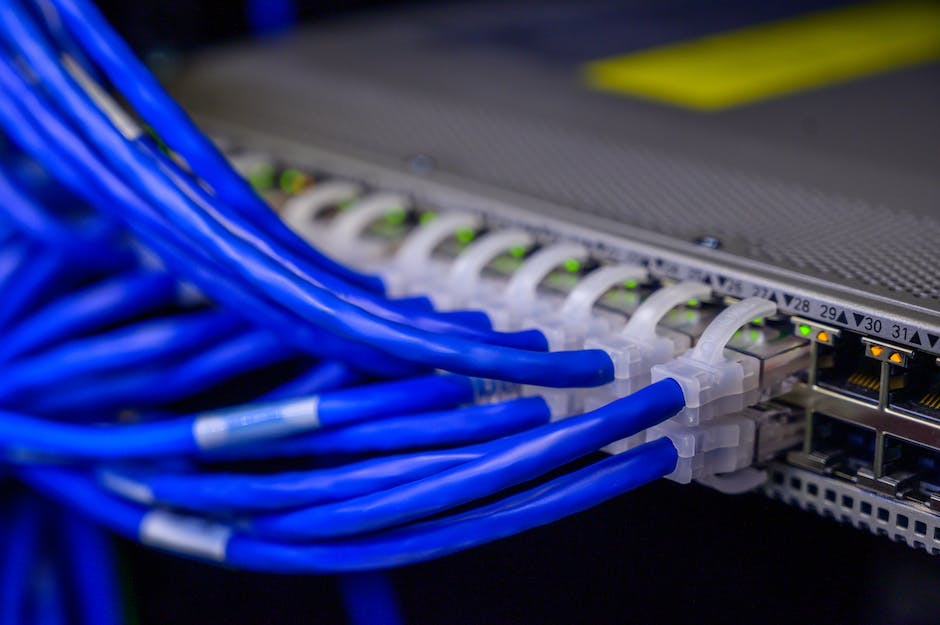In an era where our dependency on technology is surging at an incredible pace, understanding the importance of cyber security penetration tests has never been more crucial. Almost every interaction, transaction, and business operation is connected to the digital sphere, increasing the opportunities for cybercriminals to exploit vulnerabilities in our systems. With the steady rise in breach incidents and data theft, organizations, big and small, need to invest in secure infrastructures and protection strategies. Central to their arsenal of defenses is penetration testing – a practice aimed at probing their own systems for weaknesses, much like a hacker would. This fundamental aspect of cyber defense is not just about discovering vulnerabilities but also gauging the impact of these flaws and managing them.
Understanding Cyber Security Penetration Testing
Cybersecurity is ascending in the list of modern-day global concerns. As we observe the massive digital transformation our society is undergoing, it’s clear that the time is ripe to take cyber threats more seriously. An integral part of this approach is regularly conducting cyber security penetration testing. But what is it, and why is it so crucial for businesses across the globe?
Cybersecurity penetration testing, commonly known as pen testing, is a simulated cyber-attack against a system to check for exploitable vulnerabilities. It places the security controls of an organization under rigorous scrutiny, identifying weak spots in the infrastructure—be they in systems, network devices, or application software—that could potentially be exploited by attackers.
The quintessential operation of cyber security penetration testing can be distilled into five steps, which are planning and reconnaissance, scanning, gaining access, maintaining access, and covering tracks. There is, of course, varying depth and severity involved in these steps, but as a basic rundown, this encapsulates pen testing adequately well.
The objective of pen testing diverges into three core volumes: identifying vulnerabilities, testing an organization’s security policy, and testing the IT staff’s response to security incidents. However, the most paramount benefit of cyber security penetration testing extends to its capacity to validate the efficiency of an organization’s defensive mechanisms.
In a nutshell, consider cyber security penetration testing as a form of ethical hacking. Though the hacker is intentionally inflicting harm, it’s with the aim of ultimately fortifying the defenses of the system.
Should corporations, or even smaller businesses, worry about such “hacks”? Undeniably, yes. As firms experience an accelerated digitization of their services, the rise of sophisticated cyber-attacks has been an unfortunate but real side effect. A successful cyber attack can have devastating consequences for a firm, from financial losses and reputation damage to non-compliance penalties and business disruption.
Moreover, the need for pen testing becomes more prevalent with the increased adoption of cloud computing and the widespread use of wireless networks. These technologies, while providing increased flexibility and efficiency, also open new avenues for potential breaches. Hence, having a well-executed cyber security penetration testing strategy is essential for all businesses operating in today’s digital world.
Notably, pen testing is not a one-off task; it’s a recurring activity. As technologies advance, so do cybercriminals. Therefore, continual pen testing is vital to stay a step ahead, detecting and mitigating vulnerabilities before adversaries can exploit them.
In an age where information is the new gold, ensuring its safety is pivotal. Just as one would lock their physical doors, digital ones shouldn’t be any different. As frequently updating antivirus programs is necessary, so too is penetration testing. With the exponential advancements in technology and digital mediums, ensuring cyber security should no longer be seen as an option but as a necessity.
Penetration Testing Process
Moving beyond just beliefs, let’s zero in on how the intricate process of cyber security penetration testing – or pen testing, as the tech code refers to it – functions. Delving into this not-so-talked-about concept makes one realize how ‘dangerously fascinating’ tech can be, intertwining risk, strategy, and brainpower in the seamless realm of cyber security.
Cybersecurity penetration testing, in simple terms, is the virtual equivalent of testing a fortress for possible weak spots that oncoming enemy armies could exploit. Different types of pen tests – external, internal, blind, double-blind, and targeted – each come with their nuances, approaches, and techniques, yet sharing the common aim of exposing potential vulnerabilities in a system’s security defenses.
Beginning with the reconnaissance phase, pen testers operate much like detectives, meticulously gathering as much information about the system under review as possible. This open-source intelligence helps in identifying potential vulnerabilities that could become gateways for future attacks.
After this, the scanning phase takes center stage. Just as an architect tries to comprehend a blueprint, pen testers use scanning tools to understand how the target application will respond to different intrusion attempts. Static and dynamic analyses help in this stage, probing into the application’s code in paused and running states.
The critical phase of gaining access follows, where pen testers launch real attacks on the system. This mirrors the game of chess – setting traps, making deceiving moves, and capitalizing on any vulnerability detected during scanning. Varied strategies, from SQL injection to cross-site scripting, are employed to extract valuable data, proving the existence of a security gap.
Once access is gained, the true prowess of a pen tester comes to light in the maintaining access phase. Here, testers attempt to remain within the system for an elongated period, typically emulating a potential cyberattack. The idea is to determine whether the vulnerability can lead to sustained illegal activity over time – an alarming loophole for businesses.
In the final step of covering tracks, discretion is key. Pen testers, much like ethical hackers, need to erase all footprints leading back to them – not because of illegitimate intent, but to reproduce the actions of an actual hacker, making it challenging for the system’s security professionals to identify and rectify the breach.
A functioning, well-executed pen test equips organizations with crucial insights. Uncloaking unseen flaws, guiding resource allocation towards tighter security, and aptly preparing incident management protocols, the findings are a master guide to patching up vulnerabilities and enhancing defenses.
One might argue that pen testing is a Sisyphean task, transient in efficacy, given the ever-evolving nature of cyber threats. Yet, the paradox of technology is that while it brings new vulnerabilities, it also arms us with sharp, analytical tools to counter them. Cybersecurity penetration testing may not be a steadfast pill against cybersecurity issues, but it undoubtedly provides the first line of resilient defense against impending cyber onslaughts.
In the battlefield of code, where the threat is invisible and the realm boundless, pen testing is the much-needed strategic simulation that keeps the fort guarded the flag upright. In the unending chess match that is cybersecurity, penetration testing substantiates that, at times, a calculated offense perhaps indeed forms the best defense.

Cyber Security Penetration Test Tools
Diving into the meat of the subject, the principal tools employed in penetration testing warrant consideration.
These are crafted to automate, simplify, and expedite the otherwise complex activity of penetration testing.
- First up is Kali Linux. It isn’t so much a tool as it is a complete operating system brimming with a versatile array of penetration testing utilities.
Kali Linux has secured its position as a go-to option for professionals in the cybersecurity industry due to its compatibility with numerous penetration testing tools, right from information gathering equipment to vulnerability assessment applications, not forgetting exploitation tools. - Among the plethora of tools offered by Kali Linux, Metasploit stands out.
This versatile and powerful framework is employed to test the robustness of the system defenses by simulating attacks.
The tool provides insights regarding potential vulnerabilities, which may be system flaws, bad system configurations, or lapses in the security policy of the company. - Wireshark follows next in this ensemble of indispensable tools.
This package delivers extensive network monitoring functionality.
Possessing the capacity to track each byte of data moving through the network, Wireshark gives pen testers deep insights into what’s happening on their network, clues that can be crucial in unveiling vulnerabilities. - Burp Suite is yet another dominant force in the cyber security penetration testing sphere.
This tool is designed to probe web-based application vulnerabilities.
Burp Suite can map out and analyze attack surfaces, automate the crawling of content, and intrude on every request in a sophisticated manner. - Aircrack-ng is a must-have for Wi-Fi network testing.
This suite of tools caters to monitoring, attacking, testing, and cracking Wi-Fi networks.
It can capture packets, replay attacks, test Wi-Fi cards and drivers, and do much more. - Last but not least, Nessus is the de facto industry standard when it comes to vulnerability assessment.
It provides precise and comprehensive insights into the security posture of a system using a vast plugin library, which is updated daily to cater to the latest threats and vulnerabilities.
In conclusion, these software applications and platforms represent just a glimpse of the expansive arsenal of tools available for pen testing.
The ultimate choice of tools often depends on specific requirements, the technology stack, and the nature of the system being tested.
Remember, the ever-evolving landscape of cyberspace necessitates continuous adaptation, and these open-source, frequently updated tools are key to ensuring robust cybersecurity infrastructures.
They serve as powerful assistants, empowering pen testers to stay a step ahead in the race against cyber threats, thereby securing the digital frontier effectively.
Case Studies and Real-World Examples
In real-world scenarios, cyber security penetration testing functions as an essential part of an effective cybersecurity strategy by identifying vulnerabilities that are often undetectable by automated security solutions. This article delves into how cyber security penetration testing has been strategically used in various sectors, providing invaluable insights to shield against cyber threats.
In the financial sector, with daily transactions reaching billions of dollars, ensuring secure networks is paramount. In a high-profile real-world scenario, a leading bank saw repeated cyber threats despite their robust automated security solutions. The decision to employ cyber security penetration testing yielded results when they identified a weakness in the application controlling their ATM machines. This simulated attack ultimately prevented a potential real-world keylogging attack, which could have led to substantial financial losses and damage to reputation.
In the retail sector, companies heavily rely on e-commerce platforms that process voluminous customer data. A famous retail behemoth applied penetration testing when building its mobile shopping platform. This allowed them to uncover a critical vulnerability in the checkout process that would have exposed users’ credit card information. In this case, cyber security penetration testing essentially averted a potential data breach that could have impacted hundreds of thousands of customers.
The healthcare sector, dealing with sensitive patient information and medical data, is another fertile ground where cyber security penetration testing has a substantial real-world application. In a notable example, a prominent healthcare provider applied cyber security penetration testing to their patient data management system. The simulated cyber attack revealed a vulnerability in the system’s encryption protocol that could have otherwise led to the exposure of confidential patient details. This instance magnifies the importance of cyber security penetration testing in preventing cyber-attacks that can have draconian implications.
Penetration testing has also proven invaluable within governmental and defense sectors. In a recent scenario, a federal government agency used pen testing to strengthen its national security systems against potential threats. The simulated attacks led to the discovery of a vulnerability in their communication channels, which was further exploited to leak confidential information. This potential catastrophic security flaw was mitigated thanks to pen testing.
Even education sectors are not impervious to cyber threats. In a known case, a university embarked on a cyber security penetration test of its online grading system and identified a flaw that could have allowed unauthorized grade changes. Unearthing this potentially disruptive issue saved the institution from an expansive scandal.
In conclusion, these real-world scenarios from various sectors showcase the indispensable role of cyber security penetration testing in bolstering cybersecurity defenses. It doesn’t just identify vulnerabilities but also provides an opportunity to understand better how a breach can occur and, in turn, plan effective defensive strategies. The reliance on automated security solutions, while beneficial, may sometimes overlook specific vulnerabilities that only a simulated attack can reveal. Hence, integrating cyber security penetration testing into your cybersecurity strategy is no longer merely an option but an absolute necessity in the interconnected digital world. After all, it is better to fail in a controlled environment than face a real cyber attack.

Future Trends in Cyber Security Penetration Testing
When considering the future of cybersecurity, the importance of cyber security penetration testing, commonly referred to as pen testing, cannot be overstated. The shifting landscape of cybersecurity threats necessitates a proactive stance, with pen testing playing a pivotal role.
Why is it forecasted to shape the cybersecurity landscape? Because today’s cybercriminals are technologically savvy, resourceful, and persistent. With the rapid increase in sophisticated cyber attacks and the massive amount of data being generated, pen testing is more crucial than ever.
Artificially intelligent (AI) driven technologies are making waves in the cybersecurity space. AI can learn from past events and predict future attacks, thus helping to prevent them. More organizations are starting to integrate AI for cyber security penetration testing. Just as AI can drive cyber attacks, it can also power its defense. AI-based pen testing will play a major role in identifying vulnerabilities much quicker and more effectively than manual efforts.
The integration of blockchain technology is another promising development. With its ability to promote data security thanks to its decentralized nature, it could redefine how cybersecurity operates. It also provides concrete traceability, which is crucial in the event of a cyber attack. The integration of pen testing with blockchain could provide an unprecedented level of cybersecurity.
With the surge in IoT (Internet of Things), an explosion of new vulnerabilities is inevitable. The IoT-fueled devices, from autonomous cars to smart home devices, need rigorous pen testing to secure them from falling into the wrong hands. Cybersecurity professionals have accepted the challenge, leading to a rise in IoT-focused pen-testing firms.
Additionally, the perpetually evolving cloud technology landscape makes pen testing even more vital. As more and more organizations shift towards public, private, or hybrid clouds, this creates a playground for hackers to exploit. Regular pen testing is becoming a standard practice for organizations using cloud technology to ensure ongoing security.
Automated pen testing is another significant trend. It provides consistent and thorough testing results, cutting down on the time and resources spent. This doesn’t mean that it should replace human pen testers. Instead, it should be used as a tool to enhance their capabilities.
In terms of industries, the healthcare, financial, and retail sectors continue to be prime targets for cybercriminals. As such, one can expect an intense focus on specialized pen testing in these sectors. Governmental and defense sectors, as well as the education sector, will also increase their demand for pen testing due to the sensitive nature of their data.
Less reliable, automated security solutions may not be enough to cater to these future challenges, underlining the need for integrated pen testing in the cybersecurity strategy. Thoughtful application of comprehensive pen testing strategies will be paramount in getting a step ahead of destructive hacking attempts.
In conclusion, the future of cybersecurity seems primed to integrate pen testing more fully, with pioneering technology leading the way. Global trends predict the heightened significance of pen testing in managing and mitigating risks and the development of strategies to counteract evolving threats. The future promises an interesting intersection of AI, Machine Learning, IoT, Blockchain, Automated Pen Testing, and Cybersecurity – Making it an exciting sphere for tech enthusiasts to keep an eye on.

As we peer into the future, the dynamic nature of cyber security penetration testing becomes even more evident. The constant evolution of technology fuels changes within these domains, requiring adaptive strategies and proactive approaches. Technologies such as AI and IoT are pushing the boundaries of our existing security methods and will have profound effects on cyber security penetration testing processes. Ensuring the safety and privacy of data continues to be paramount, and as such, cyber security penetration testing will be an integral part of our digital landscape. Looking forward, we must be equipped to meet these evolving challenges head-on while enhancing our abilities to detect, respond to, and prevent cyber threats.

